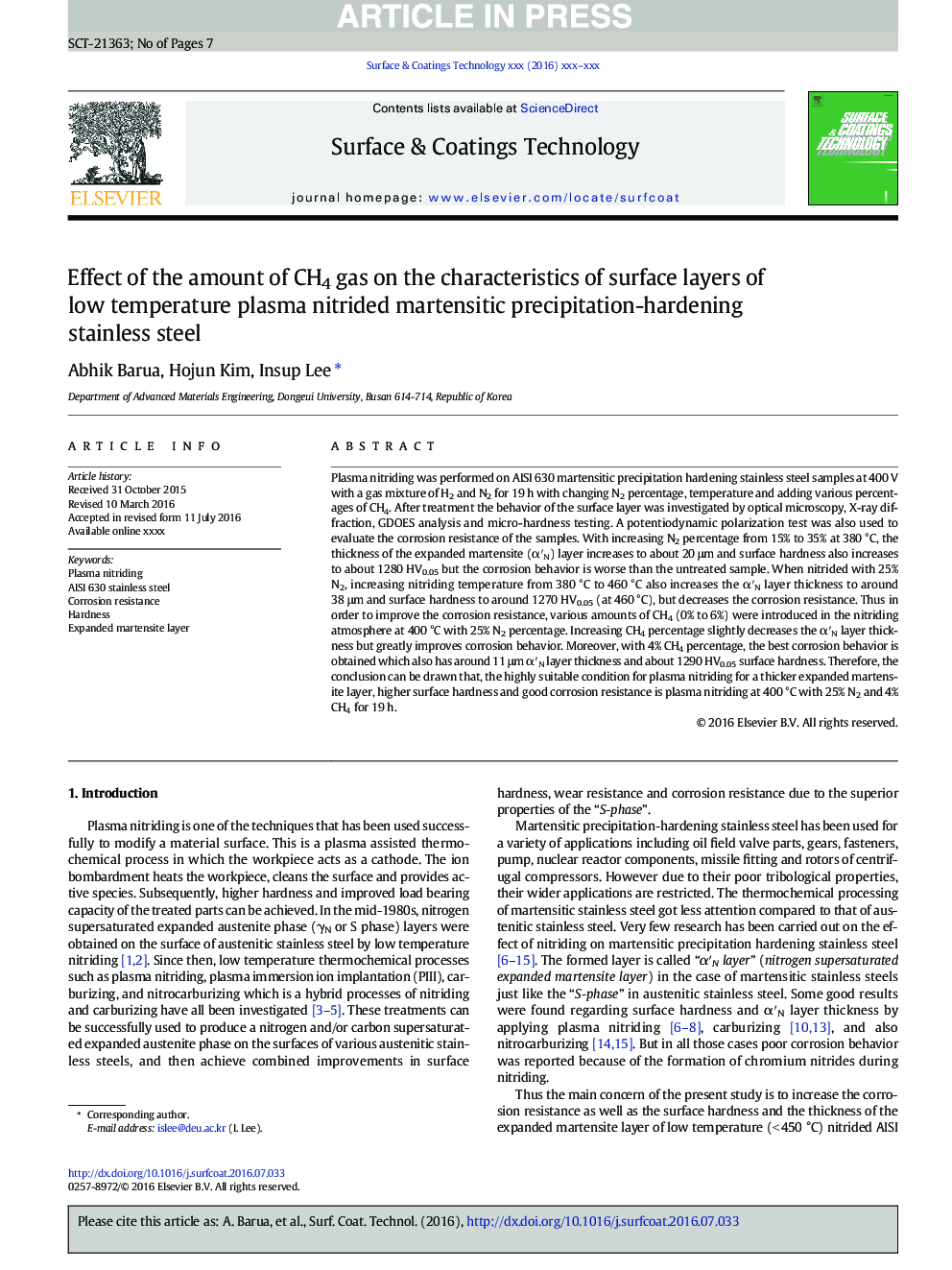| Article ID | Journal | Published Year | Pages | File Type |
|---|---|---|---|---|
| 5465336 | Surface and Coatings Technology | 2016 | 7 Pages |
Abstract
Plasma nitriding was performed on AISI 630 martensitic precipitation hardening stainless steel samples at 400 V with a gas mixture of H2 and N2 for 19 h with changing N2 percentage, temperature and adding various percentages of CH4. After treatment the behavior of the surface layer was investigated by optical microscopy, X-ray diffraction, GDOES analysis and micro-hardness testing. A potentiodynamic polarization test was also used to evaluate the corrosion resistance of the samples. With increasing N2 percentage from 15% to 35% at 380 °C, the thickness of the expanded martensite (αâ²N) layer increases to about 20 μm and surface hardness also increases to about 1280 HV0.05 but the corrosion behavior is worse than the untreated sample. When nitrided with 25% N2, increasing nitriding temperature from 380 °C to 460 °C also increases the αâ²N layer thickness to around 38 μm and surface hardness to around 1270 HV0.05 (at 460 °C), but decreases the corrosion resistance. Thus in order to improve the corrosion resistance, various amounts of CH4 (0% to 6%) were introduced in the nitriding atmosphere at 400 °C with 25% N2 percentage. Increasing CH4 percentage slightly decreases the αâ²N layer thickness but greatly improves corrosion behavior. Moreover, with 4% CH4 percentage, the best corrosion behavior is obtained which also has around 11 μm αâ²N layer thickness and about 1290 HV0.05 surface hardness. Therefore, the conclusion can be drawn that, the highly suitable condition for plasma nitriding for a thicker expanded martensite layer, higher surface hardness and good corrosion resistance is plasma nitriding at 400 °C with 25% N2 and 4% CH4 for 19 h.
Related Topics
Physical Sciences and Engineering
Materials Science
Nanotechnology
Authors
Abhik Barua, Hojun Kim, Insup Lee,
